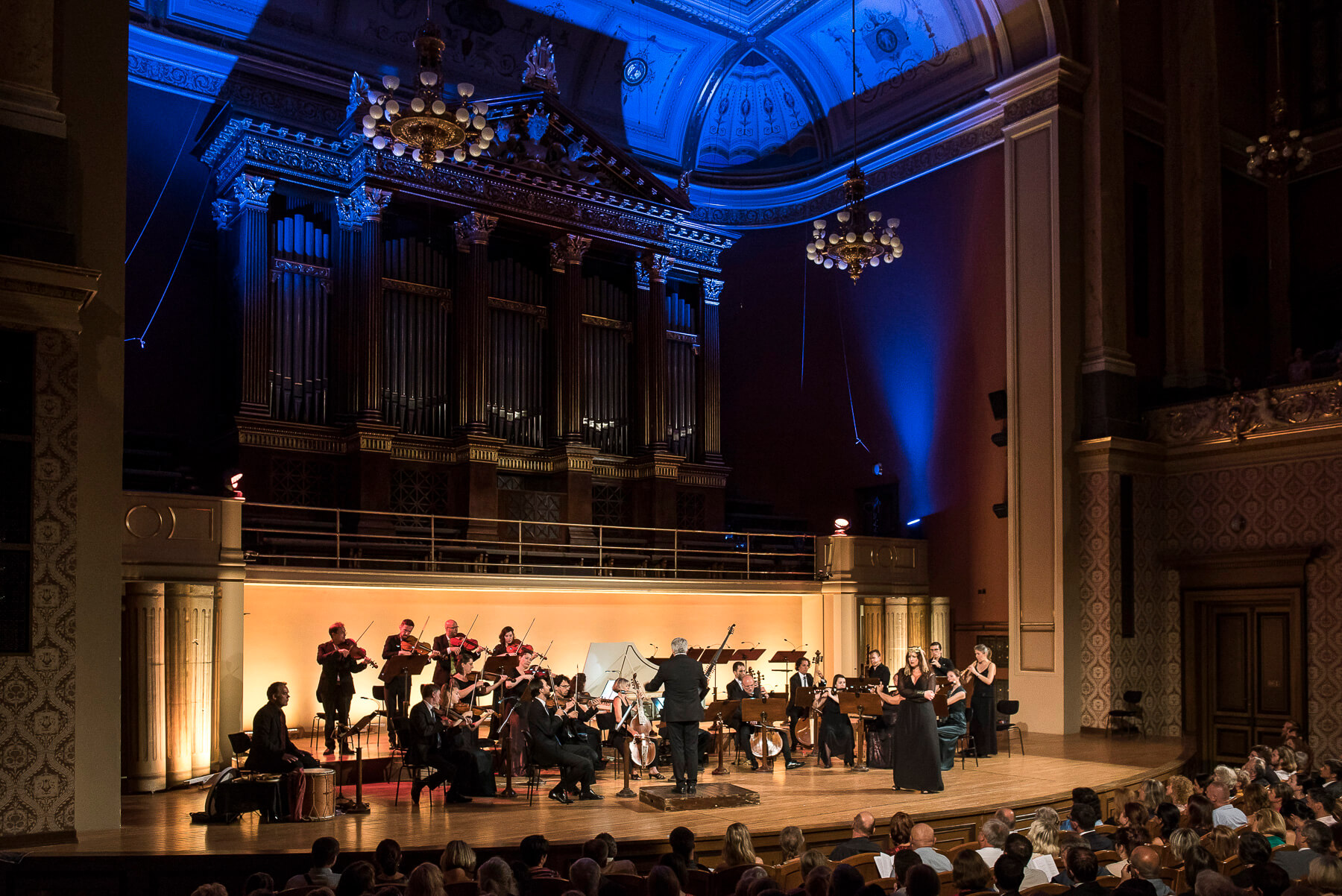
Rudolfinum
Dvořák Hall
náměstí Jana Palacha 79/1, Praha 1 - Staré Město, 110 00
Situated in the heart of Prague, on the bank of the Vltava, the majestic building of the Rudolfinum was conceived as a multi-purpose seat of the Muses: a home to music, an art gallery and a conservatoire. The construction of the Rudolfinum, whose concept was unique at the time, was initiated by Böhmische Sparkasse (Česká spořitelna) to celebrate the 50th anniversary since its establishment. The prestigious building project bore witness not only to the financial strength of Böhmische Sparkasse, but also to its sense of corporate social responsibility and belief in the supreme role of the arts.
The Rudolfinum was built between 1876 and 1881. The festive opening, presided over by Rudolf, Crown Prince of Austria, in whose honour the building was named, took place on 7 February 1885. The building was designed by architects Josef Zítek and Josef Schulz. In 1884, the Dvořák Hall, one of the oldest concert halls in Europe was created; on 4 January 1896 it hosted the inaugural concert of the Czech Philharmonic Orchestra, under the baton of Dvořák himself. Since 1946, the Rudolfinum has been the home of the Czech Philharmonic Orchestra.
Following the establishment of the Czechoslovak Republic in 1918, the building was called “The House of Artists”. It went through several transformations, in the 1920s and 1930s it even served as the seat of the National Assembly (the conversion was designed by Rudolf Kříženecký). The parliament held its sessions in the Rudolfinum between 1919 and 1941. In 1920, 1927, and 1934, the Dvořák Hall saw the re-election of Tomáš Garrigue Masaryk as the president of the republic. After the Second World War the building was used by the Academy of Music and the seat of the Czech Philharmonic Orchestra. The current shape of the building and its interiors are the results of an extensive reconstruction between 1990 and 1992.
Address
RudolfinumDvořák Hall
náměstí Jana Palacha 79/1, Praha 1 - Staré Město, 110 00




